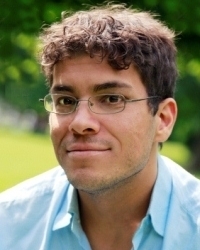
Joris Timmermans
Guest researcher
- Name
- Dr.ir. J. Timmermans
- Telephone
- +31 71 527 7481
- j.timmermans@cml.leidenuniv.nl
- ORCID iD
- 0000-0002-6359-8092
Joris Timmermans is a remote sensing researcher at the Institute of Environmental Studies (CML) at Leiden University and a consultant at University College London Consultant. His field sits at the intersection between environmental sciences, physics and computer science. His current focusses on the radiative transfer in soil/vegetation as well as the application of earth observation data to monitor biodiversity (loss) specifically: how can data-assimilation techniques be used to merge multiple satellite (optical and radar) observations consistently to investigate ecological processes? At present only single-sensor approaches are used. This is in stark contrast to the large number (145) of research satellites currently orbiting earth, and only when multi-sensor frameworks are implemented can advancements in ecological and environmental research be made. To this purpose Joris is contributing to the recently released MULTIPLY platform that combines ecological information, and radiative transfer modelling and Bayesian statistics for operationally producing information regarding functional vegetation traits and evaluating biodiversity loss.
Professional Experience
His research over the last couple of years has been focused on developing multi-sensor approaches to remote sensing, with special attention to improving evapotranspiration monitoring. Employing multi-sensor approaches to land surface parameter retrieval requires detailed information on radiative transfer processes, while improving evapotranspiration monitoring demands expert knowledge of processes within the canopies. In that perspective his work can be divided into two parts: radiative transfer modelling and evapotranspiration estimation.
- Combining observations from different satellite sensors/constellations requires expert knowledge on 1) the full radiative transfer from the vegetation through the atmosphere to the sensors and 2) the measurements of this radiation by sensors with specific spatial-temporal and spectral characteristics. In that view, I have performed extensive research into multi-directional radiative transfer [1-3], atmospheric correction, and retrieval of land surface parameters [2]. Within the recently granted ITT - Synergy project (funded by ESA) I will participate in further developing the multisensory approach by building a virtual sensor tool for combining Sentinel-2 and Sentinel-3 data.
- Monitoring evapotranspiration from space demands expert knowledge 1) on the biophysical processes within the canopies and 2) the interaction between the land surface and the micro-climate/atmosphere above the surface. In the last couple of years I have not only worked on creating the Soil Canopy Observation of Photosynthesis and Energy (SCOPE) Surface Vegetation Atmosphere Transfer (SVAT) model [4-6], but also on estimating evapotranspiration at large scales around the world [7, 8]. Within ESA’s WACMOS project I have realised an algorithm for daily ET mapping at 1km resolution over china and Europe. Within the current FP7 SIGMA project he has recently achieved the first global daily evapotranspiration map at reduced (5.6km) resolution.
Research Topic
Combining different satellite observations synergistically.
At present his work focusses on advancing uncertainties in land surface parameter retrieval. Detailed surface vegetation radiative processes will be investigated using detailed radiative transfer models (such as SAIL/DART/ACRMF). ‘Hyperspectral Virtual sensors’ will be created in order to fast and accurately simulate these processes at large scale. Data assimilation of current remote sensing observed radiations into this virtual sensor model will then be investigated in order to enhance land surface parameter retrievals. In particular, these ‘hyperspectral virtual sensors’ will be used to 1) retrieve land surface parameters (such as canopy water content), 2) Investigate subpixel heterogeneity, and explore disaggregation methodologies to couple observations at different scales.
Guest researcher
- Science
- Centrum voor Milieuwetenschappen Leiden
- CML/Environmental Biology
- Project executie synergy (advising capacity)




